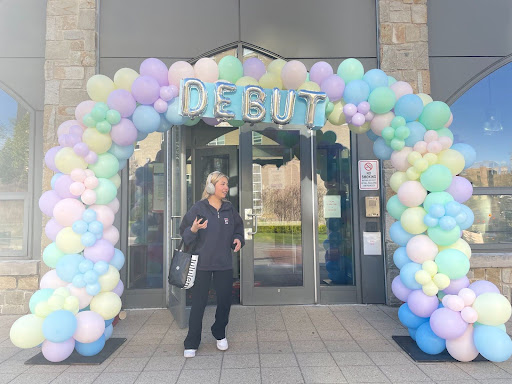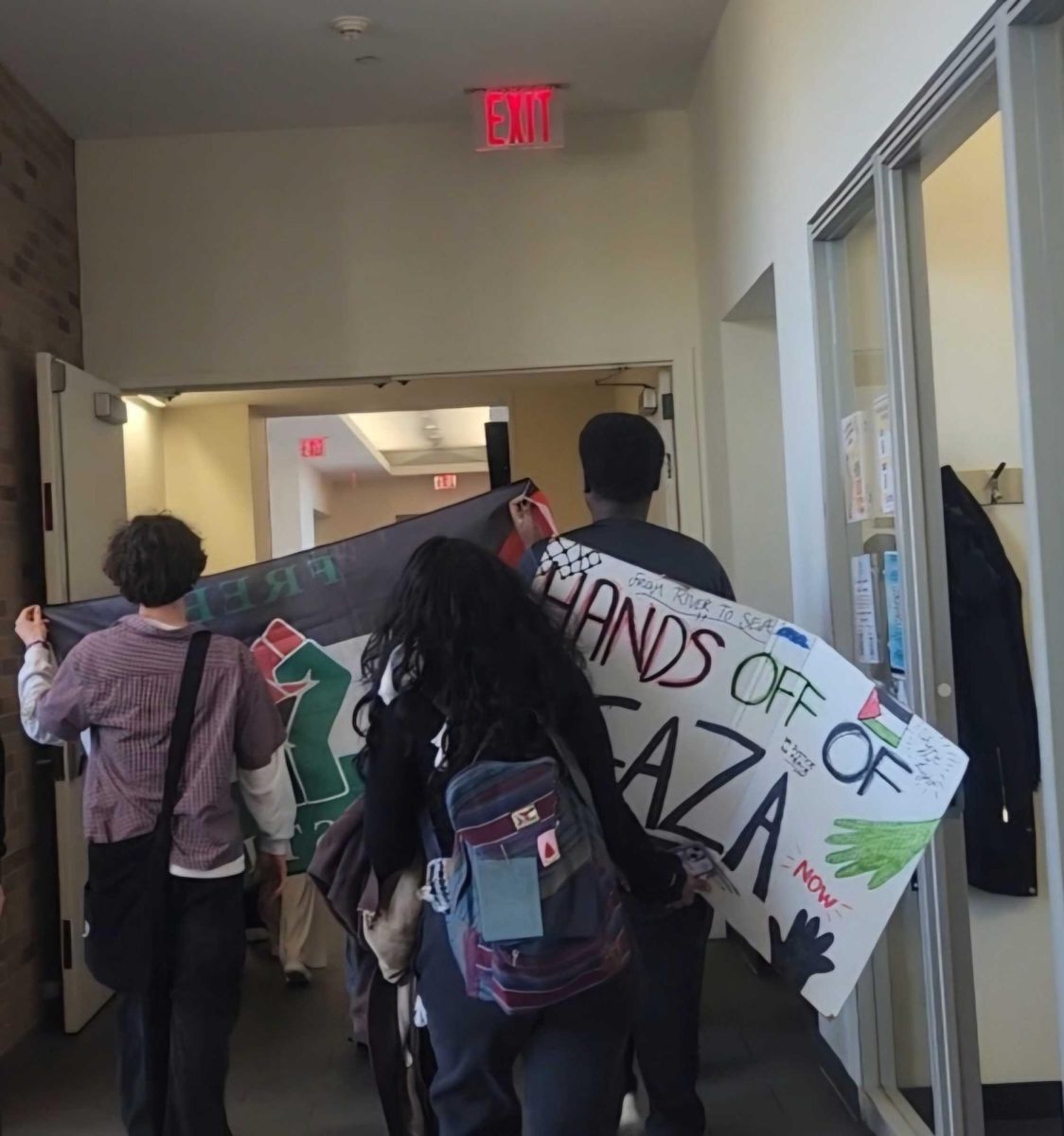Panelists gathered in the Little Theatre on Wednesday Jan. 24, under the moderation of St. John’s University School of Law’s Vice Dean, Larry Cunningham, and the Queens Tribune’s Michael Nussbaum, to discuss the Second Amendment.
They particularly discussed the question: Is it relevant today in light of the proliferation of gun violence and greater capacity of guns to kill?
Such panelists included an alumni of St. John’s, Hon. George A. Grasso, Supervising Judge of Criminal Court of the City of New York; Hon. Gene Lopez, Supervising Judge, Criminal Term, Queens County; Assistant District Attorney Francesco Catarisano, Chief, Kew Gardens Trial Bureau; Steve Wasserman, Esq., Legal Aid Society, Criminal Practice and another alumni of St. John’s, Oleg Chernyavsky, Esq., Director, Legislative Affairs, New York City Police Department.
Panelists discussed how citizens find themselves turning on the TV only to be met with the latest mass shooting in the United States. They argued the biggest opponent to change is the Second Amendment, which is the right to bear arms.
The backbone of the night’s discussion was the case of District of Columbia vs. Heller (2008), in which a 5-4 decision mandated that an individual had the right to keep and bear arms, therefore eliminating the notion that the Second Amendment only pertained to “militia.”
Grasso called this decision a “cop out.”
“The Second Amendment is still in search of a meaning,” Wasserman said.
He added that we are living in a time where everything, in particular advancements made in gun control, could revert backwards. Wasserman also mentioned New York’s strict gun control laws may change if President Donald Trump appoints a judge to the Supreme Court.
Chernyavsky turned the conversation to the new proposal for a national carry and conceal law, that was passed by the House of Representatives.
The Concealed Carry Reciprocity Act would allow citizens in states with looser permit laws to travel with firearms to other states with stricter laws, such as New York.
This residency issue could “turn New York back to the battle days of the mid 1980s,” according to Catarisano. Currently, 13 states have constitutional carry laws that allow citizens to carry firearms with nothing more than a driver’s license.
The conversation also turned to the culture that prevents any progress in decreasing gun violence. Grasso called upon a greater emphasis on mental illness which may affect gun violence.
“We are not doing nearly enough on mental illness across the board,” he said.
He used Rikers Island inmates as such an example of the phenomena; 40 percent of the inmates have been diagnosed with mental illnesses, 97 percent of which have substance abuse problems. Grasso voiced his belief that people with mental illnesses need not just medical attention, but supportive housing and care.
Grasso also proposed the idea that gun ownership is not the main factor of gun violence in the U.S., and brought up the possibility of it being partly because of glorification of violence in popular media.
All panelists agreed on the relevance of the Second Amendment in today’s society, saying that the problem is there and needs to change. Catarisano warned that it is not constructive to look at changing the relevance of the amendments because it raises the questions of the role of other amendments in American lives.
“I wish [the event] had been more well attended. This is a big deal…” Grasso said directly to the audience, stressing that it is time to stop debating about the past and decide on the future.
“I’m a little disappointed that more people didn’t show up,” junior Patrick Pardo said. “However, I’m very glad I learned a lot more … about the stats and what real people in the field such as judges, attorneys [and the] district attorney’s office think about this important subject.”
One student though it would have been better for the judges to give “their ideas of how to move forward with gun control and gun violence.” They were not allowed to give their opinions in regards to the Second Amendment.
“I think it was advantageous to learn about all that stuff but I think there was a roadblock that they couldn’t really give their opinions on what they think could help gun violence and gun control,” junior Alexis Contreras said. “So I think that was the only bad part of it. Maybe for the next panel … get people who can give their opinion.”
However, Nussbaum was happy with the outcome of the event overall. Although he acknowledged attendance wasn’t very high, he did think it was an important issue to discuss.
“On the issue of gun control, gun violence and the validity of the Second Amendment, I was happy because I was just impressed by the depth of discussion,” he said. “So if you had two judges, you have a senior district attorney, assistant district attorney, someone from the police department and someone on the other side whose the defense attorney — they all understood each other’s position. You didn’t have the diametric left or right so I was very happy with it.”





















Jim Macklin • Feb 6, 2018 at 12:42 am
In 1788 the Senate REJECTED including the words “for the common defense” into the right to keep and bear arms. Justice Scalia did not invent something new and radical with HELLER.
In 1939 the Supreme Court did not issue an opinion in the MILLER case, rather the Court remanded the case for trial to create a record the Court could review. The Justices said that all they were sure about was that when the militia needed to form, the peole were “expected to appear bearing their private arms.” These were described as modern contemporary arms which in 1939 included Thompson submachine guns. Today the AR15 and other so-called assault weapons” are the arms most protected by teh Second Amendment.
Gun violence is worst where the average person is disarmed by law. Criminals commit crimes with golf clubs, hammers, knives and guns when they can get them. Honest citizens need guns to defend since the golf club, cresent wrench and screw driver are poor defensive weapons.
If there were no huns at all, every 14 year old girl would be raped because a gun is te equalizer that a girl, woman or invalid can use to stop crime.
Jonah Hirsh • Feb 1, 2018 at 5:11 pm
The Second Amendment has already been dissected by Justice Scalia, writing for the majority in D.C. v. Heller (2008). Why these charlatans are wasting our time rehashing settled law is a question for better minds than theirs.
“The Second Amendment is still in search of a meaning,” Wasserman said.
It is not. It is in search of originalist judges in lower courts who will not thumb their noses at the obvious, which is all-too-often the case. Not only do they ignore the plain language of the amendment and the statements of those who ratified it, they ignore the Supreme Court of the United States in applying its accepted interpretation.
These malcontents need to shut up and go away. The debate’s OVER. AAMOF, it was over in 1789.
Jim Kilpatrick • Feb 1, 2018 at 3:17 pm
I actually looked up the definition of the words in dictionaries from as close to the founding as I could find, mostly 3rd and 5th Ed. Black’s Law, and am happy to share what I learned:
Well-regulated: operating/functioning properly or as intended; well-calibrated; well-quipped
Militia: armed PEOPLE/populace/citizenry.
Free State: state of individual liberty (Not FL, AL, etc.)
Right: This is a detailed one and they try to obsfucate it as much as possible but, in our context, a right is a power, privilege or immunity guaranteed (NOT “granted”) by a Constitution.
Keep: own, possess, maintain
“to bear”: to carry on or about the body or in the clothing, or a pocket, so as to be immediately employable in the event of a confrontation. (Justice Ginsburg quoted Black’s Law in the Muscarello Opinion substantially the same)
Arms: Any Thing that can be used for defensive or offensive action; usually refers to weapons of military utility.
Shall not be infringed: Absolutely forbidden to violate
Infringe: A breaking into; A tresspass or encroachment; A violation of a law, regulation, contract or right.
So, I’d restate the 2nd Amendment as follows:
A well armed and trained citizenry, being necessary to securing individual liberty for all, the right of the people to carry weapons of military utility, or any Thing which may be used for offensive or defensive action, upon or about their body, or in their clothing or pockets, wherever they are, whatever they’re doing, as long as it’s “lawfull” (not necessarily in compliance with color of law Codes, Statutes, Ordinances, Rules, Regulations, etc.), absolutely shall not be violated, tresspassed or encroached upon, regulated, restricted or otherwise hampered in any small way whatsoever.
THANKS for letting me share.
Frank Clarke • Feb 1, 2018 at 11:41 am
NYC, population 8.5 million, has issued 2,291 concealed carry permits. That is statistically zero. As a result, violent crime is almost unknown in The Big Apple.
Just kidding.
The fundamental problem with trying to debate issues such as this is that virtually everything anti-gun fanatics (including, it appears, that entire panel) know about guns and gun owners is wrong, and that this is not an accident. They’re perfectly content to hold onto unsubstantiated beliefs whose veracity has many times been called into question and they make no attempt to discover on which side lies truth.
In this country 100+ million gun owners own 350+ million firearms and 200+ billion rounds of ammunition (such numbers are necessarily imprecise). If any appreciable fraction of American gun owners were as dangerous and unstable as the pearl-clutchers believe, the #1 job in this country would be “undertaker”, yet every — and I mean EVERY — suggestion for “common-sense gun control” targets this demographic, the law-abiding citizen. We law abiding citizens are DONE with your nonsense.
Within America’s nearly 4 million square miles, virtually all “gun violence” occurs within the less than 400 square miles of the inner cities of about two dozen major metropolitan areas. Nearly all of it is drug-fueled, minority-on-minority gang conflict in enclaves that have been Democrat-ruled for decades and where gun control is strictest. People like this panel wish the rest of America were just like that. No, thank you.
Rich • Feb 1, 2018 at 11:19 am
moderation/censorship
Rich • Feb 1, 2018 at 11:18 am
comments section?